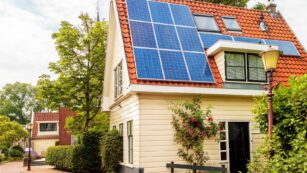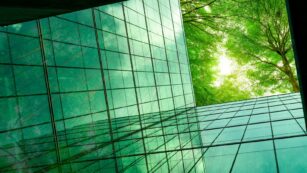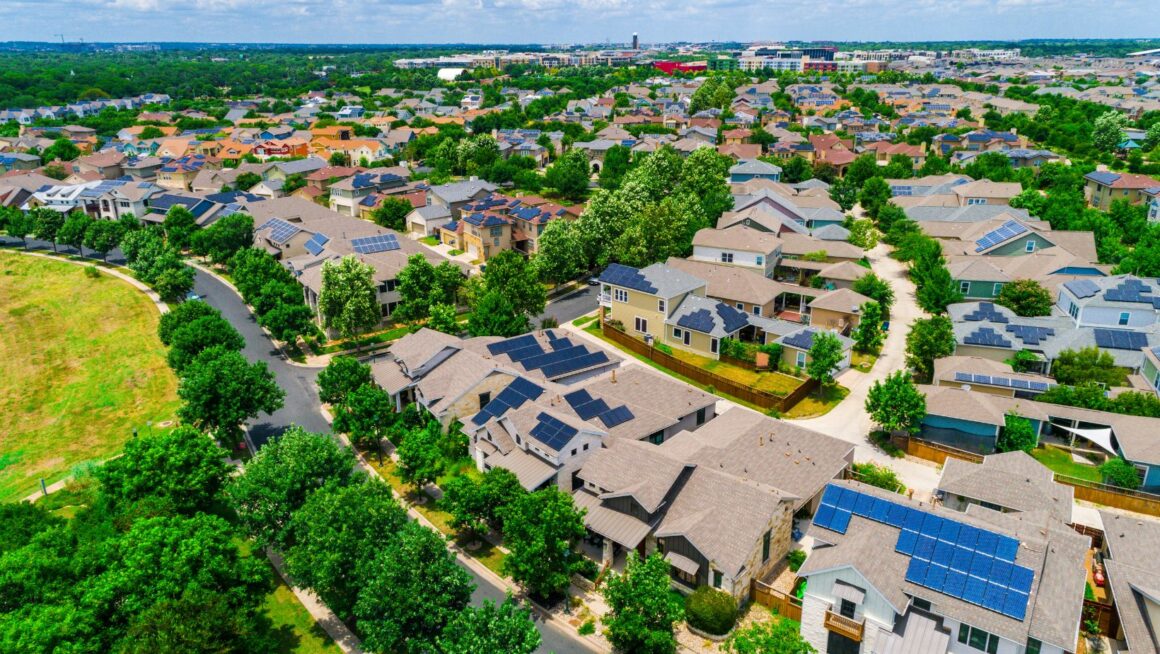In today’s eco-conscious world, green building features are no longer just a trend—they’re a crucial component of modern architecture. These sustainable elements are designed not only to reduce the impact on the environment but also to enhance the quality of life for occupants. From energy-efficient appliances to rooftop gardens, green buildings are paving the way toward a more sustainable and environmentally friendly future.
Green Building Features
Energy-Efficient Appliances
Energy-efficient appliances reduce electricity usage and lower utility bills. Refrigerators, dishwashers, and HVAC systems with Energy Star certifications use at least 10% less energy than standard models. In 2019, Energy Star appliances saved consumers $39 billion in energy costs across the United States.
Solar Panels
 Solar panels convert sunlight into electricity, decreasing reliance on fossil fuels. A typical home can offset nearly 80% of its electricity needs with a solar panel system. They also enhance property values; installations increase home values by approximately 4.1% on average.
Solar panels convert sunlight into electricity, decreasing reliance on fossil fuels. A typical home can offset nearly 80% of its electricity needs with a solar panel system. They also enhance property values; installations increase home values by approximately 4.1% on average.
Water-saving fixtures, like low-flow toilets and showerheads, substantially reduce water usage. Toilets with the WaterSense label use no more than 1.28 gallons per flush compared to older models that use up to 6 gallons. Houses equipped with these technologies can save about 20,000 gallons of water per year.
Sustainable Materials
Using sustainable materials ensures lower emissions and promotes environmental stewardship. Bamboo, recycled steel, and reclaimed wood offer durable alternatives to traditional construction resources. Buildings that incorporate these materials significantly lower their carbon footprint.
Green Roofs
 Green roofs absorb rainwater, provide insulation, and combat heat island effect by cooling urban areas. They can reduce a building’s heating and cooling demands by over 25%. Beyond economic benefits, green roofs also offer habitats for wildlife and recreational spaces for residents.
Green roofs absorb rainwater, provide insulation, and combat heat island effect by cooling urban areas. They can reduce a building’s heating and cooling demands by over 25%. Beyond economic benefits, green roofs also offer habitats for wildlife and recreational spaces for residents.
Each of these features contributes to making buildings more sustainable and economically viable, reinforcing the commitment to future-proof architecture as highlighted in the previous sections of the article.
Smart Home Technology
Smart home technology optimizes energy use and boosts efficiency. Smart thermostats adjust temperatures based on daily patterns and weather forecasts, potentially reducing heating and cooling bills by 10-15%. Similarly, automated lighting systems adjust to maximize natural light usage, decreasing overall electricity consumption.
Key Green Building Features
Green building features play a crucial role in enhancing sustainability and improving the lives of occupants. These features not only help in reducing the ecological footprint but also offer significant economic benefits.
Energy Efficiency Techniques
 Energy efficiency stands at the forefront of green building strategies. High-performance insulation and windows create tightly sealed building envelopes that maintain internal temperatures, reducing the need for heating and cooling. LED lighting systems, which consume up to 75% less energy than traditional incandescent bulbs, further enhance energy savings. Programmable thermostats optimize heating and cooling operations, ensuring that energy use aligns with occupancy patterns. For instance, the use of Energy Star-rated appliances can reduce energy consumption by about 10-50% compared to non-rated models, making a substantial cut in utility bills.
Energy efficiency stands at the forefront of green building strategies. High-performance insulation and windows create tightly sealed building envelopes that maintain internal temperatures, reducing the need for heating and cooling. LED lighting systems, which consume up to 75% less energy than traditional incandescent bulbs, further enhance energy savings. Programmable thermostats optimize heating and cooling operations, ensuring that energy use aligns with occupancy patterns. For instance, the use of Energy Star-rated appliances can reduce energy consumption by about 10-50% compared to non-rated models, making a substantial cut in utility bills.
Water Conservation Solutions
Water conservation is integral to green building practices. Low-flow fixtures, including faucets, showerheads, and toilets, significantly decrease water usage without compromising performance. For example, low-flow toilets can save up to 13,000 gallons of water per household annually. Rainwater harvesting systems provide a sustainable water source for landscaping and toilet flushing, reducing the demand on municipal supply and minimizing stormwater runoff. Greywater systems repurpose water from sinks and showers for non-potable uses, further enhancing water efficiency.
Sustainable Materials and Resources Usage
 Selecting sustainable materials is essential for reducing the environmental impact of buildings. Bamboo, cork, and recycled metal are popular choices due to their renewable qualities and minimal harmful emissions. These materials not only support sustainability but also ensure indoor air quality and lower the overall carbon footprint of the building process. Additionally, responsible sourcing of these materials, such as certified wood from managed forests, supports global efforts in habitat protection and ecological balance. The integration of local materials reduces transportation emissions and supports the local economy, cementing the role of sustainable materials in green building.
Selecting sustainable materials is essential for reducing the environmental impact of buildings. Bamboo, cork, and recycled metal are popular choices due to their renewable qualities and minimal harmful emissions. These materials not only support sustainability but also ensure indoor air quality and lower the overall carbon footprint of the building process. Additionally, responsible sourcing of these materials, such as certified wood from managed forests, supports global efforts in habitat protection and ecological balance. The integration of local materials reduces transportation emissions and supports the local economy, cementing the role of sustainable materials in green building.

